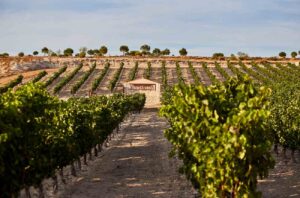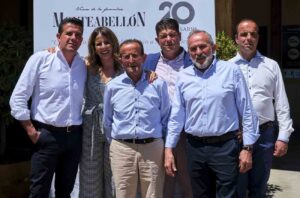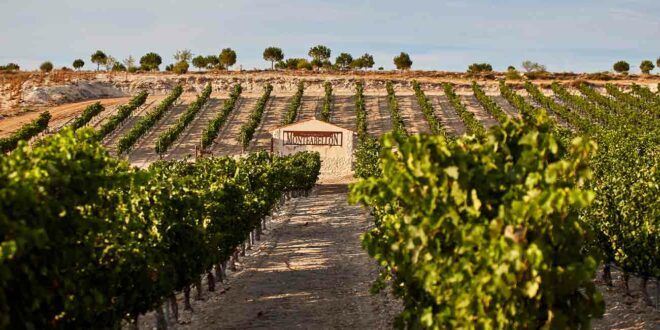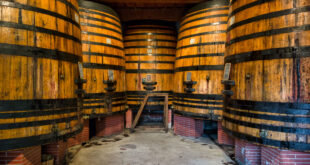 Bodegas Monteabellón in Ribera del Duero, Spain
Bodegas Monteabellón in Ribera del Duero, Spain
In the heart of one of the finest wine regions of Spain, Bodegas Monteabellón produces complex and profound wines that speak to the winery’s utmost care and respect for its surroundings. This commitment to quality was recognised in the 2024 Decanter World Wine Awards, where the 2018 Finca La Blanquera, one of the winery’s flagship wines, was awarded an outstanding 94 points and a silver medal.

Quality in its roots
For the family behind the Monteabellón wines, everything begins in the vines, including the history of the winery itself. Since grandfather Fabian first planted vines in 1948, the family has focused on growing quality grapes, originally only selling their harvest to some of their most respected neighbours in the region. It wasn’t until 2000 that they built their own winery and started to make fine wines under their own label.

The Monteabellón family – from front to back and from left to right: Cesar García and Fernando García (second generation brothers), Juan Manuel García, Ana García, Cesar García and Alberto García (third generation siblings and children of Cesar and Ana).
Located in Nava del Roa, one of the most sought-after terroirs in Ribera, Monteabellón owns 175ha of different plots on various soils and altitudes that rise to 950m, where the Finca La Blanquera vineyard can be found. Nearly all the plantings are Tempranillo (locally referred to as Tinta del País) which benefits from the estate’s sandy loam and stoney soils, as well as clay and some precious limestone. These diverse soils bring a lot of complexity to the wines, particularly La Blanquera which draws its structure and longevity from this special terroir.
Monteabellón is committed to protecting this environment by implementing sustainable viticulture – no insecticides or pesticides are used – and bees have been encouraged to increase the biodiversity in the area. The family is also dedicated to developing more employment in their region to improve the rural economy.

Monteabellón’s wines are powerful with an impressive concentration of fruit thanks to the high-quality of grapes grown by the winery.
An eye on the future
Despite such a long and important history, the Monteabellón winery takes a modern approach, using the latest in winemaking technology, and the team is always looking at expanding its horizons. The heart of the project may lie in Ribera del Duero but the family, alongside winemaker Isaac Fernandez Montaña, has produced two new wines in Rioja and one in Rueda to offer their customers something extra. They also have plans to release an Albariño and Godello following the next harvest.

Key to the expansion of the range is the customer experience. The winery in Ribera del Duero is well equipped to welcome visitors who can visit the vineyards and taste the other award-winning wines in the Monteabellón range. One of these award winners, Finca Matambres 2019 was allocated a silver medal and 91 points at this year’s Decanter World Wine Awards.
Monteabellón’s wines from Ribera del Duero are recognised for their style and unique personality. They are powerful wines with an impressive concentration of fruit, yet kept in balance by the extraordinary complexity of the region’s microclimate and high altitude vineyards. Although they are at once approachable, they will be enjoyed for many years to come.
Discover more about Monteabellón
Connect on
Facebook | Instagram | YouTube

![]()

The post Monteabellón: One of Ribera del Duero’s finest appeared first on Decanter.
Source : https://www.decanter.com.master.public.keystone-prod-eks-euw1.futureplc.engineering/sponsored/monteabellon-one-of-ribera-del-dueros-finest-539197/



